Jiu-Jitsu, or Brazilian Jiu-Jitsu as it is commonly named outside Brazil, is a grappling orientated martial art/combat sport that evolved from its Japanese roots in 1920s Brazil, and continued to evolve for many decades after until its present format. This style though previously established in its native country became highly popular in the northern hemisphere after a series of cage-fighting performances from BJJ representative Royce Gracie in the early UFC’s (Ultimate Fighting Championship) where he battled against competitors from many different martial arts backgrounds in the no holds barred tournament, becoming the fighting promotion’s first champion. This event proved Jiu Jitsu’s efficiency and helped raise awareness to this combat form all around the world, becoming one of the reasons behind the sport’s growth.
- The Birth of Jiu-Jitsu
- Main Figures of JiuJitsu
- Main Jiu-Jitsu Teams
- Main Jiu-Jitsu Tournaments
- BJJ Competition Videos
- Celebrities in Jiu-Jitsu
The history of Jiu-Jitsu in Brazil is not a settled or linear event and it has many forms and theories.
One thing does seem to generate some consensus. The fact that one man had a strong influence in the sport’s inception, Mitsuyo Maeda – known in Brazil as Conde Coma (Count Coma). Maeda was a student of Jigoro Kano and his Kodokan School of martial arts. Though Kano is widely recognized as the father of Judo, his style of teaching was regarded in the early days as a branch of Ju-Jitsu and not it’s own martial style. In fact, Jigoro’s branch of Ju-Jitsu has been diluted from its original format over the years by consistent changes to Judo’s rules and regulations.
Mitsuyo Maeda was one of Jigoto Kano’s star pupils and traveled the world as a prize fighter during the early stages of the 20th century. Maeda traveled all over the globe displaying the art in arenas and circuses, passing through the United States, England, and many other countries before landing in Brazil. It is here that the story gets murky.
According to the Gracie family, Maeda met Carlos Gracie when he was a young boy, a troubled teenager whom Maeda took under his wing and taught the Kano style. Gracie would then pass the knowledge down to his brothers who were groundbreaking in innovating and representing this fighting style in Rio de Janeiro and later the world. This narrative has been debunked by different martial arts historians, namely Roberto Pereira and Robert Drysdale who claim Carlos never met Maeda and that, instead, Gracie likely learned how to grapple from another student of Mitsuyo.
Outside of Maeda’s lineage tree, there were other Japanese masters teaching in Brazil at the same time, men who were lesser-known, though still relevant to the development of Brazilian grappling, people like Takeo Iano in the North of Brazil and Kazuo Yoshida in Bahia, to name a few
The influence of Mitsuyo Maeda in Carlos Gracie is a riddle, yet, the Japanese master did establish a school in his old age, where his lineage is still very much alive.
In 1925, Carlos established his first school of Jiu-Jitsu on Marques de Abrantes Street, number 106, Rio de Janeiro. To help out with the school he brought in his brothers. The brothers were: Oswaldo, George, Gastão, and Hélio Gracie. Carlos and his brothers would go on to promote their academy through a series of challenges. both in grappling rules and no-holds-barred.
Though Helio became possibly the most famous family member of the Gracie brothers, it was George Gracie who held the family’s name highest competitively from that first generation of Gracie combatants. Helio Gracie did compete successfully also, but his two most famous fights were also his worst defeats, to Masahiko Kimura and Waldemar Santana, two fights he lost when he was already reaching his 40s against bigger and younger men.
As Carlos Gracie got more involved with the business side of the family and George’s wild ways separated him from his brothers, it was Helio who took responsibility in keeping the school a tight unit. Helio Gracie was also given the responsibility of raising most of Carlos’ sons, teaching them the family martial arts trade. From the 1920s the Gracie family has been able to produce consistent talent through every generation, making it one of the strongest martial arts lineages in the world and the strongest amongst Brazilian Jiu-Jitsu.
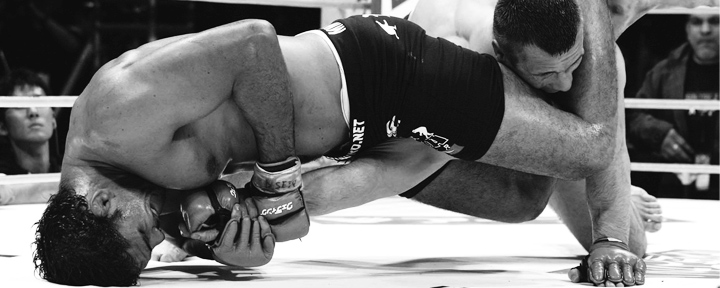
The first steps of MMA were given in the 1920’s Brazil and these events were called “Vale Tudo” (anything goes or no-holds-barred). They were unsanctioned bouts with no rules (eye-gouging and strikes to the groin were allowed) no gloves, no weight categories, and most of the time they did not have a time limit either. It was in these bouts that many jiu-jitsu representatives made their mark and created a reputation for the style. As the sport progressed, a few tweaks were made to these Vale Tudo matches, but nowhere near what the sport is today.
In the early days, when these matches started occurring, Jiu Jitsu’s greatest opponent was Luta Livre, a style of submission grappling used in Brazil. As the popularity of Vale Tudo grew, so did the rivalry between these two opposing styles, so much so that many street fights between students of both martial arts and even Dojo storming were common practice.
In 1984 an attempt to settle the affair was made with the “Jiu-Jitsu vs Martial Arts” event being held where several important figures of Jiu-Jitsu were put up against fighters of other trades (but mainly Luta Livre). The result was inconclusive and the unfriendly Banta continued, until 1991, one of the most important events in the history of Vale Tudo/MMA was held to decide once and for all which was the best martial art in Brazil, the name of the event was “Desafio – Jiu-Jitsu vs. Luta Livre” (BJJ vs Luta Livre Challenge). 3 fighters were chosen from each style to compete against each other in a Vale-Tudo match with no time limits, the fighters from BJJ were Wallid Ismail, Murilo Bustamante, and Fabio Gurgel against Eugenio Tadeu, Marcelo Mendes, and Denilson Maia from Luta Livre. Jiu-Jitsu won all three fights, a major feather on the cap of the BJJ community and became broadly considered the stronger style, the dispute between the two styles had many ups and downs, as described in our “JJ vs Luta Livre” article, a dispute that ultimately led to the ban of Vale Tudo in Brazil.
While the Brazilian Vale Tudo panorama was roaring, the same was not happening in the United States. It was again through the Gracie family’s efforts that the sport was put in its rightful place. The Gracie’s had seen a market for their Jiu-Jitsu style in America after opening an academy in California. In trying to prove that their style was the superior martial art available, the Gracie’s developed a No Holds Barred event, the concept being designed by Rorion Gracie. This event was named Ultimate Fighting Championship (UFC), and it had the same principle as the Vale Tudo events back in Brazil. The first champion to emerge from this event was the aforementioned Royce Gracie, who later became a UFC Hall of Fame.
The brand name and the event itself would suffer severe changes to the initial rule set, such as the inclusion of gloves, the kimono (Gi) being stripped, the time limit (rounds), striking limitations added, etc. With time the fighters became more well-rounded learning all facets of the game. Today, though less relevant than it was in the past, Jiu-Jitsu is still one of the most important disciplines in the sport.
As NHB started in the US during the early 1990s, the same took place in Japan around the same time. Considered the birth nation of Martial Arts, Japan would have a head start when it came to No Holds Barred; the Japanese were serious about striking martial arts and ground fighting with their Karate and Kosen Judo schools. Still, when MMA (Vale Tudo) emerged in Japan, another Gracie name rose above all others, the name of Rickson Gracie. Considered by many the greatest BJJ competitor of all time, Rickson remained undefeated throughout his career, and once again cemented the Gracie name and the Jiu-Jitsu style in that country.
Jiu Jitsu has not lacked charismatic and meaningful people in its history, here is a snapshot of some important figures in chronological order:
1920s
 Carlos Gracie: The founder of Gracie Jiu-Jitsu, Carlos was the visionary behind the movement that became the sport of Brazilian Jiu-Jitsu. Carlos opened the first Gracie Jiu-Jitsu school and taught Jiu-Jitsu to all his brothers.
Carlos Gracie: The founder of Gracie Jiu-Jitsu, Carlos was the visionary behind the movement that became the sport of Brazilian Jiu-Jitsu. Carlos opened the first Gracie Jiu-Jitsu school and taught Jiu-Jitsu to all his brothers.
 George Gracie: The Gracie family’s first champion, George fought in several different styles (Jiu-Jitsu – with kimono), Luta Livre (submission grappling), Wrestling, and Vale Tudo (no holds barred). He fought for over two decades but broke free from Carlos and Helio’s team and even competed against them at the end of his career.
George Gracie: The Gracie family’s first champion, George fought in several different styles (Jiu-Jitsu – with kimono), Luta Livre (submission grappling), Wrestling, and Vale Tudo (no holds barred). He fought for over two decades but broke free from Carlos and Helio’s team and even competed against them at the end of his career.
1930s
 Helio Gracie: had his first no holds barred fight in 1932 when he was 18 years old – a win by choke within a minute. Helio placed his career on hold for 12 years, starting in 1938, during his physical prime due to personal reasons. He returned to run the Gracie school and also to compete, having two of his toughest career defeats in this second career turn (Santana and Kimura), but also one of his proudest wins (against Kato).
Helio Gracie: had his first no holds barred fight in 1932 when he was 18 years old – a win by choke within a minute. Helio placed his career on hold for 12 years, starting in 1938, during his physical prime due to personal reasons. He returned to run the Gracie school and also to compete, having two of his toughest career defeats in this second career turn (Santana and Kimura), but also one of his proudest wins (against Kato).
1940s
 Pedro Hemeterio: One of Carlos Gracie’s most prolific students, the man from the Ceará region of Brazil fought and defeated numerous competitors in the name of Gracie Jiu-Jitsu. He would also help develop the sport in the state of Sao Paulo in the 1950s.
Pedro Hemeterio: One of Carlos Gracie’s most prolific students, the man from the Ceará region of Brazil fought and defeated numerous competitors in the name of Gracie Jiu-Jitsu. He would also help develop the sport in the state of Sao Paulo in the 1950s.
1950s
 Carlson Gracie: The son of Carlos Gracie was indeed one of the sports’ greatest icons both competitively and as a coach. He raised the bar of Jiu-Jitsu competing for several decades while being a visionary coach. Carlson was the first Gracie instructor to have group classes rather than the one-on-one style of coaching utilized by his predecessors, and his team would become one of the strongest in both MMA and BJJ in the 1970s, 1980s, and 1990s.
Carlson Gracie: The son of Carlos Gracie was indeed one of the sports’ greatest icons both competitively and as a coach. He raised the bar of Jiu-Jitsu competing for several decades while being a visionary coach. Carlson was the first Gracie instructor to have group classes rather than the one-on-one style of coaching utilized by his predecessors, and his team would become one of the strongest in both MMA and BJJ in the 1970s, 1980s, and 1990s.
 Oswaldo Fadda: Was one of the first coaches outside Rio de Janeiro’s “Zona Sul” (wealthy area) leaving behind one of the strongest non-Gracie Jiu-Jitsu lineages in the country with links in teams such as Nova Uniao, GF Team, and many others.
Oswaldo Fadda: Was one of the first coaches outside Rio de Janeiro’s “Zona Sul” (wealthy area) leaving behind one of the strongest non-Gracie Jiu-Jitsu lineages in the country with links in teams such as Nova Uniao, GF Team, and many others.
1960s
 Osvaldo Alves: He had a strong Judo pedigree which helped raise awareness of this aspect of grappling amongst the Gracies. His technical knowledge was of great importance, and his close contact with Reyson and Rolls Gracie in the 60s and 70s would help further develop the sport towards a more encompassing grappling style. He has also taught several BJJ world champions.
Osvaldo Alves: He had a strong Judo pedigree which helped raise awareness of this aspect of grappling amongst the Gracies. His technical knowledge was of great importance, and his close contact with Reyson and Rolls Gracie in the 60s and 70s would help further develop the sport towards a more encompassing grappling style. He has also taught several BJJ world champions.
 Ivan Gomes: One of the first “Vale Tudo” men to cross-train in different martial arts, Ivan was a fierce competitor that helped elevate the Jiu-Jitsu name in NHB. He was considered Carlson Gracie’s toughest opponent by Carlson himself. The two would open a BJJ academy together years after their clash.
Ivan Gomes: One of the first “Vale Tudo” men to cross-train in different martial arts, Ivan was a fierce competitor that helped elevate the Jiu-Jitsu name in NHB. He was considered Carlson Gracie’s toughest opponent by Carlson himself. The two would open a BJJ academy together years after their clash.
1970s
 Rolls Gracie: The big name of the decade and one of the biggest names in the sport, period. His ideas on cross-training in Judo, Wrestling, and Sambo were visionary at the time, and they helped set the pace of the sport in the right direction while also developing it technically. He was a tremendous competitor and the family’s champion during the 70s.
Rolls Gracie: The big name of the decade and one of the biggest names in the sport, period. His ideas on cross-training in Judo, Wrestling, and Sambo were visionary at the time, and they helped set the pace of the sport in the right direction while also developing it technically. He was a tremendous competitor and the family’s champion during the 70s.
Rolls’ lineage has left its mark and is one of the strongest in the world with Alliance, Gracie Barra, Checkmat, Atos, and Brasa all spawning from his students. Gracie’s death came very prematurely and his relevance could have been even bigger if he had lived until old age.
1980s
 Carlos Gracie Junior: After the death of Rolls Gracie, Carlinhos took the helm of his academy; he would later launch a Gracie Academy in what were the outskirts of Rio de Janeiro (today a famous and trendy neighborhood of Barra da Tijuca). This team would become one of the juggernauts of BJJ from the 1990s onwards. Carlos Gracie Jr also became the president of Jiu Jitsu’s federation and really put Jiu Jitsu’s name on the map at an international level.
Carlos Gracie Junior: After the death of Rolls Gracie, Carlinhos took the helm of his academy; he would later launch a Gracie Academy in what were the outskirts of Rio de Janeiro (today a famous and trendy neighborhood of Barra da Tijuca). This team would become one of the juggernauts of BJJ from the 1990s onwards. Carlos Gracie Jr also became the president of Jiu Jitsu’s federation and really put Jiu Jitsu’s name on the map at an international level.
 Rickson Gracie: The Gracie family stud in the 1980s and for most of the 1990s, Rickson is famed for his invincible record. After the death of Rolls Gracie left a big hole in the family and the sport, Rickson was of tremendous influence, keeping the flame alive while bringing the sport’s awareness in other parts of the world such as Japan and the United States.
Rickson Gracie: The Gracie family stud in the 1980s and for most of the 1990s, Rickson is famed for his invincible record. After the death of Rolls Gracie left a big hole in the family and the sport, Rickson was of tremendous influence, keeping the flame alive while bringing the sport’s awareness in other parts of the world such as Japan and the United States.
 Marcelo Behring: The legendary Rickson Gracie disciple was a tremendous student of the game, being considered throughout his career as the #2 ranked fighter in Brazil (pound for pound), second only to Rickson Gracie. Though his death was a tragedy to the sport, his legacy lived on and the wealth of knowledge he brought to Sao Paulo helped develop the sport in that region (which is today arguably the strongest in the world when it comes to BJJ).
Marcelo Behring: The legendary Rickson Gracie disciple was a tremendous student of the game, being considered throughout his career as the #2 ranked fighter in Brazil (pound for pound), second only to Rickson Gracie. Though his death was a tragedy to the sport, his legacy lived on and the wealth of knowledge he brought to Sao Paulo helped develop the sport in that region (which is today arguably the strongest in the world when it comes to BJJ).
 Ricardo De La Riva: A creator and developer of positions, De La Riva was one of the strongest competitors of his generation who heavily contributed to the technical development of BJJ.
Ricardo De La Riva: A creator and developer of positions, De La Riva was one of the strongest competitors of his generation who heavily contributed to the technical development of BJJ.
1990s
 Fabio Gurgel: The leader of the Alliance team was one of the strongest competitors of his generation; he was also of great importance to BJJ with his win over Denilson Maia at the Jiu-Jitsu vs Luta Livre challenge. In the 1990s Gurgel was a fierce competitor, defender of Jiu Jitsu’s honor in NHB as well as a founding member of one of BJJ’s most important schools.
Fabio Gurgel: The leader of the Alliance team was one of the strongest competitors of his generation; he was also of great importance to BJJ with his win over Denilson Maia at the Jiu-Jitsu vs Luta Livre challenge. In the 1990s Gurgel was a fierce competitor, defender of Jiu Jitsu’s honor in NHB as well as a founding member of one of BJJ’s most important schools.
 Royler Gracie: Already an important figure of Jiu-Jitsu in the 1980s, Royler was one of the best Gracie champions ever produced at the sport of BJJ, setting the record for World Championships and ADCC gold medals during his heyday. Royler was the first king of the featherweight division and the first truly dominant BJJ’er in the new CBJJ/IBJJF era.
Royler Gracie: Already an important figure of Jiu-Jitsu in the 1980s, Royler was one of the best Gracie champions ever produced at the sport of BJJ, setting the record for World Championships and ADCC gold medals during his heyday. Royler was the first king of the featherweight division and the first truly dominant BJJ’er in the new CBJJ/IBJJF era.
 Royce Gracie: Royce probably brought more awareness to Jiu-Jitsu than anyone on the planet. His wins at the early UFC’s put Jiu-Jitsu on the cover of most martial arts magazines in the world.
Royce Gracie: Royce probably brought more awareness to Jiu-Jitsu than anyone on the planet. His wins at the early UFC’s put Jiu-Jitsu on the cover of most martial arts magazines in the world.
 Wallid Ismail: The Carlson Gracie champion made headlines numerous times throughout the decade. His wins over Gracie family members Ralph, Renzo, and Royce helped put his name and the name of his academy on the map, but it was his back-and-forth antics with Ryan Gracie really kept the press working overtime. Wallid was also one of Carlson Gracie’s most loyal students.
Wallid Ismail: The Carlson Gracie champion made headlines numerous times throughout the decade. His wins over Gracie family members Ralph, Renzo, and Royce helped put his name and the name of his academy on the map, but it was his back-and-forth antics with Ryan Gracie really kept the press working overtime. Wallid was also one of Carlson Gracie’s most loyal students.
 Roberto Correa/ Nino Schembri / Roberto Magalhaes: 3 very important figures for Jiu-Jitsu all from the Gracie Barra academy, all 3 were world champions; however it is in the development of the technical aspect of the sport that they will always be remembered. Correa is regarded as the father of the half-guard, having helped develop that position tremendously. Schembri also developed several important positions from the guard and will always be remembered as one of the sport’s most creative fighters, while “Roleta” Magalhaes developed the inverted guard (today also called tornado guard), another important position that came as a true puzzle when it was first introduced in the competition circuit.
Roberto Correa/ Nino Schembri / Roberto Magalhaes: 3 very important figures for Jiu-Jitsu all from the Gracie Barra academy, all 3 were world champions; however it is in the development of the technical aspect of the sport that they will always be remembered. Correa is regarded as the father of the half-guard, having helped develop that position tremendously. Schembri also developed several important positions from the guard and will always be remembered as one of the sport’s most creative fighters, while “Roleta” Magalhaes developed the inverted guard (today also called tornado guard), another important position that came as a true puzzle when it was first introduced in the competition circuit.
2000s
 Tererê: The first major star in sport Jiu-Jitsu born in the favelas (Brazilian slums), Fernando was the embodiment of class struggle in Brazil. The flamboyant black belt under Alexandre Paiva was one of the biggest stars at the turn of the millennium, using a very innovative and athletic style, which set the gears in motion for modern-day jiu-jitsu.
Tererê: The first major star in sport Jiu-Jitsu born in the favelas (Brazilian slums), Fernando was the embodiment of class struggle in Brazil. The flamboyant black belt under Alexandre Paiva was one of the biggest stars at the turn of the millennium, using a very innovative and athletic style, which set the gears in motion for modern-day jiu-jitsu.
 Saulo Ribeiro/Xande Ribeiro: The Ribeiro brothers together have 11 world BJJ gold medals and 4 ADCC first spots; they have competed and won against the best fighters of their generation. They have also developed a fair share of interesting black belt talent through their academy in California.
Saulo Ribeiro/Xande Ribeiro: The Ribeiro brothers together have 11 world BJJ gold medals and 4 ADCC first spots; they have competed and won against the best fighters of their generation. They have also developed a fair share of interesting black belt talent through their academy in California.
 Marcelo Garcia: A BJJ phenomenon, this multiple-time world champion in Jiu-Jitsu has proven his worth numerous times with and without the gi. His charisma has also gathered a legion of fans around him, and he is regarded as one of the most talented fighters to have ever competed in BJJ.
Marcelo Garcia: A BJJ phenomenon, this multiple-time world champion in Jiu-Jitsu has proven his worth numerous times with and without the gi. His charisma has also gathered a legion of fans around him, and he is regarded as one of the most talented fighters to have ever competed in BJJ.
 Ronaldo Souza: Anther amazing competitor that came from the city of Manaus (like the Ribeiro Bros), “Jacare” as he is known annihilated his opposition before turning to MMA.
Ronaldo Souza: Anther amazing competitor that came from the city of Manaus (like the Ribeiro Bros), “Jacare” as he is known annihilated his opposition before turning to MMA.
 Roger Gracie: There is only one Roger Gracie and in BJJ there are no adjectives that can quantify this man’s greatness within the sport. The number of titles could speak for themselves, but the emphatic fashion with which he managed to pull off his wins is of tremendous significance. If it has been said that there was a time before Rolls Gracie and a time after Rolls Gracie, the same can be said about Roger Gracie.
Roger Gracie: There is only one Roger Gracie and in BJJ there are no adjectives that can quantify this man’s greatness within the sport. The number of titles could speak for themselves, but the emphatic fashion with which he managed to pull off his wins is of tremendous significance. If it has been said that there was a time before Rolls Gracie and a time after Rolls Gracie, the same can be said about Roger Gracie.

Leonardo Vieira (Leozinho): Stuck in between two decades (90s and 00s), Leo Vieira was one of the most exciting lightweight/featherweights the sport had the pleasure of celebrating. Similar to Tererê in bringing a more dynamic game to the mats, Vieira is also known as an innovator, using high-level wrestling and a more creative approach to guard-passing, breaking barriers for the passing of the decade that succeeded him. Leozinho would also be the man behind one of the top jiu-jitsu teams in the world, Checkmat, a team he co-founded with his brother Ricardo Vieira.
2010s
 Rafael Mendes: The Atos standout really made a mark as the most dominant featherweight of his generation, establishing that status at the age of 20. He also developed (alongside his Atos camp) several positions, being the 50-50 guard the most significant.
Rafael Mendes: The Atos standout really made a mark as the most dominant featherweight of his generation, establishing that status at the age of 20. He also developed (alongside his Atos camp) several positions, being the 50-50 guard the most significant.

Rodolfo Vieira: Arguably the most exciting jiu-jitsu athlete of his generation, Vieira brought a superb style with violent takedowns and aggressive guard passing, always with the submission in his sights. Vieira will forever be remembered as one of the finest guard passers with the gi, in this sport, a style he used to bring the GF Team into the spotlight at a global level.

Leandro Lo: the former Cicero Costha student was the first athlete to break Saulo Ribeiro’s record of IBJJF World titles in different weight classes (5) — light, middle, medium-heavy, heavy and open weight, a 20-year-old record Lo broke in 2020.

Marcus Almeida (Buchecha): Much like the aforementioned Roger Gracie, there will be a time before Almeida and after. Buchecha re-wrote the history books by winning 6 IBJJF World Championship open weight titles, bulldozing, and doubling over the previous record set by Roger of 3 open weight titles in the black belt division. Almeida was also one of the most physical grapplers ever seen in the sport, mixing tremendous size with speed and athleticism.

Gordon Ryan: Another “once in a lifetime” grappler, Ryan broke the established convention that, in order to succeed in the no-gi, an athlete needed to train with the gi. Ryan pushed the no-gi envelope tremendously, using his popularity to raise awareness towards the submission-only movement happening in the United States after 2015. Ryan also dominated the ADCC tournament by going “back to basics”, using a classic style of jiu-jitsu, focussed on ground-work when so many athletes were turning towards a more wrestling-centric style to compete in the famous tournament.
Jiu Jistu always had a strong sense of community, almost family-like. Granted that the same sentiment is felt in other martial arts, but the sense of belonging to a team is incredibly strong and has been for decades. In Brazil, the rivalry between teams was very intense in the 1980s and 1990s, and it wasn’t uncommon for members of opposite teams to feel genuine animosity towards each other, with the eventual street fight occurring. The sport has come a long way since then, and today many fighters are famed for cross-training and training in more than one team, but in the 1990’s this issue was taboo, and the term “Creonte” (someone who betrays their master by changing camps) was a major offense, the term was created by Carlson Gracie who was famed for nicknaming people and things and it was based on a soap opera character.
Here is a rundown of the biggest Jiu-Jitsu camps in the sport of BJJ:
Alliance: It started off as a union between black belt students of Jacare Cavalcanti, who gathered every competitor in their respective academies to be able to compete against the bigger teams. At the turn of the century, Alliance suffered a major split that bled the team of its best black belt competitors. The team managed to regroup on the second half of that decade and rebuild itself, becoming a true juggernaut in BJJ.
Important Alliance figures:
Romero Jacare
Fabio Gurgel
Rubens Charles
Alexandre Paiva
Marcelo Garcia
Gracie Barra: Carlos Gracie team had its glory day in the late 1990s and has been a force to be reckoned with ever since. There have been severe restructuring within their organization, which did harm their competitive team, but they still manage to develop strong talent very regularly.
Important Gracie Barra figures:
Carlos Gracie Junior
Marcio Feitosa
Jefferson Moura
Marcio Cruz
Vinicius Draculino
Gracie Humaita: One of the oldest and proudest Gracie institutions, Gracie Humaita is one of the most traditional academies in the world, from their headquarters in Rio de Janeiro they have produced several important competitors and figures and after many decades they are still amongst the best in the game.
Important Gracie Humaita figures:
Royler Gracie
Rickson Gracie
Saulo Ribeiro
Alexandre Ribeiro
Leticia Ribeiro
Checkmat: They are one of the “youngest” teams in the circuit, having formed their organization in the later years of the 2000s decade. Checkmat has hit the ground running and within this short spell, they have been able to score regularly in all major tournaments around the world.
Important Checkmat Figures:
Ricardo Vieira
Leo Vieira
Michelle Nicolini
Lucas Leite
Atos: With a severe religious background, Atos (which means “Acts” like in “The Book of Acts” – the fifth book of the New Testament) has every member catechized. They are one of the youngest teams in the competitive scene (much like Checkmat), and have done very well competitively with a new style of grappling, very focussed on new guard positions.
Important Atos figures:
Ramon Lemos
André Galvao
Rafael Mendes
Claudio Calasans
Guilherme Mendes
Nova Uniao: One of the strongest lightweight teams in history, this team has lost its glow at the turn of the millennium in sport BJJ. The team has focussed more on the MMA aspect of the game but still manages to produce quality BJJ’ers.
Important Nova Uniao figures:
André Pederneiras
Wendell Alexander
Robson Moura
Jose Aldo
Vitor Ribeiro “Shaolin”
Carlson Gracie Team: One of the strongest lineages in the world, the Carlson Gracie team had a major split in the turn of the millennium, but unlike the Alliance team, it never regained the splendor of its Hay-Day.
Important Carlson Gracie figures:
Carlson Gracie
Cassio Cardoso
Sergio Bolão
Murilo Bustamante
Zé Mario Sperry
Another important reason why Jiu-Jitsu has grown so fast since the 1990s has been the competition side that has been regulated by a governing body (IBJJF), there are different organizations spread thought the world with slightly different rules, though these (on this list) are broadly considered the biggest ones on the calendar.
The World Jiu-Jitsu Championships (Mundial): The biggest tournament in the world has been running steadily since 1996, run by CBJJ/IBJJF.
The Pan Jiu-Jitsu Championship (Pan American): The second most important tournament in the IBJJF calendar, has grown from strength to strength.
World Professional Jiu-Jitsu Championship (World Pro Cup): One of the newest competitions to be added to the curriculum, this UAE-based tournament gathers the top competitors in the world through a series of trials held in the majority of continents. It also has the advantage of awarding a significant prize money to its contestants.
Brasileiro de Jiu-Jitsu (Brazilian National Championship): One of the oldest and the most prestigious competition still held on Brazilian soil. The “Brasileiro” is a big opportunity for some of jiu jitsu’s elite to showcase their skills, especially those that cannot get a visa to enter the USA where the Mundial and the Pan are held.
European Open Championship: The best chance European “Jiujiteiros” have to showcase their skills to the broader public, this event is held in Lisbon, Portugal every year in January and it marks the opening of the CBJJ/IBJJF calendar for the year.
Abu Dhabi Combat Club (ADCC): Not made specifically for Jiu Jitsu, it is the largest and most prestigious submission grappling event on the planet. BJJ practitioners have been the most successful style within the ADCC rule set.
The BJJ Rules:
The rules of Brazilian Jiu Jitsu are not simple; in fact refereeing has been a touchy subject because of this. In order to leave the essence of the sport intact while trying to preserve it’s competitors from serious risk there have been many unconventional rules added to the manual throughout the years. Different tournaments also may apply different rules (as we see happening with the World Pro Cup and the ADCC). One of the hardest and one of the most controversial rules to judge has been the “reaping of the knee” rule, still the basic concept behind the rules of Jiu Jitsu is, if you advance/improve your positioning you get awarded points, if you force your opponent to tap (give up) due to a choke or joint lock pressure you immediately win the contest.
The Main Points Are:
“Queda” – Throw or Takedown: If both challengers are standing, and one initiates and succeeds at taking the other to the mat, he is awarded 2 points.
“Raspada/Raspagem” – Sweep: If your opponent is within your guard (any kind of guard) and you invert the position (you landing on top and your opponent on the bottom) you are awarded two points.
“Passagem de Guarda” – Guard Pass: If you are inside your opponents guard and manage to escape that position, still maintaining top position, you have improved your position and therefore are awarded 3 points.
“Pegada de Costas” – Back Mount: Regardless of where you are, if you manage to take your oponents back and place both feet around the inside of your opponent thighs (hooks), controlling him that way, you are awarded 4 points (you will need to place the hooks, body triangle will not score points).
“Montada” – Mount: On top position with both legs around the opponent’s torso with knees on the ground, 4 points.
The bouts in the adult black belt division are 10 minutes long, and the opponent with the most points at the end wins the fight.
The BJJ Kimono
The Jiu Jitsu kimono is often recognized by having many patches, some belonging to the school to which the fighter belongs to, but also showcasing the fighter’s sponsors. There are similarities also with the Judo Kimono, in terms of consistency, but the Judo Kimono usually has a lot more material, while the BJJ Kimono is more fitted.
The Main BJJ Kimono/Gi brands are:
- Koral Fight Co.
- Shoyoroll
- Atama
- Keiko Sports
Some Examples of BJJ in Competition
EXAMPLES OF BJJ WITH THE KIMONO
Nino Schembri vs Margarida
Romulo Barral vs Demian Maia (Brasileiro 2006)
Leo Vieira vs Baret Yoshida
In hitting main stream, several celebrities have embraced the sport, some even reaching the degree of black belt. Here are a few names of famous people that have joined in:
Entertainers:
Chuck Norris (Actor): Black belt under Jean Jacques Machado
Spencer Pratt (Celebrity)
Ashton Kutcher (Actor): Trained with Ricardo De La Riva
Eve Torres (Professional Wrestler)
Nicolas Cage (Actor): Training under Royce Gracie
Chris Conrad (Actor): Training under Jean Jacques Machado.
Jim Carrey (Actor)
Steven Daniells-Silva (Dancer): Training under Andre Pederneiras
Michael Clarke Duncan (Actor, Former Bodyguard): Trains at Gracie Academy in Torrance, CA.
Michael Dudikoff (Actor)
Sean Patrick Flanery (Actor): Black belt (promoted May 4, 2008) under Shawn Williams.
Olivier Gruner (Actor, Kickboxer)
Steve Irwin (Deceased) (Wildlife Expert/Television Personality)
Kevin James (Actor)
Milla Jovovich (Actress/Model/Fashion Designer/Singer)
Richard Norton (Martial Artist/Actor/Stuntman): Black belt under Jean Jacques Machado.
Ed O’Neill (Actor): Black belt under Rorion Gracie
CM Punk (Professional Wrestler and current holder of the World Heavyweight Championship in Professional Wrestling
Guy Ritchie (Director): Training under Renzo Gracie.
Joe Rogan (Comedian/Actor/Sports Commentator): Training under Eddie Bravo
Jason Statham (Actor)
Paul Walker (Actor/Model): Training under Ricardo “Franjinha” Miller.
Mario Van Peebles (Actor/Writer/Director)
The Undertaker (Professional Wrestler)
Alexandre Frota (Brazilian Actor)
Raul Gazola (Brazilian Actor)
Mauricio Mattar (Brazilian Actor): Black Belt from Gracie Barra
Musicians:
Ulises Bella (Musician):
Harley Flanagan (Musician): Training under Renzo Gracie.
Rakaa Iriscience (Musician): Training under Ryron and Rener Gracie
Tommy Lee (Musician)
Herman Li (Musician)
Maynard James Keenan (Musician): Training under Rickson Gracie.
Alex Varkatzas (Musician): Training under Cleber Luciano
Rikki Rockett (Musician): Black belt under Renato Magno.
Ben Granfelt (Musician.): Training under Alexandre Paiva.
Zack Roth (Musician): Training under Mike Mrkulic.
Bruce Williams (Blues Musician): Training under Mike Mrkulic.




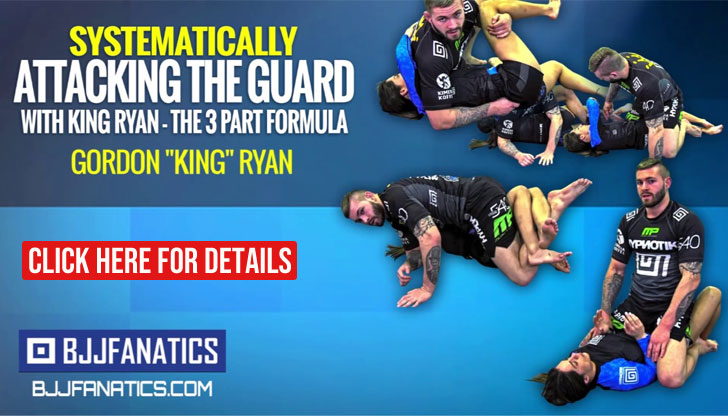
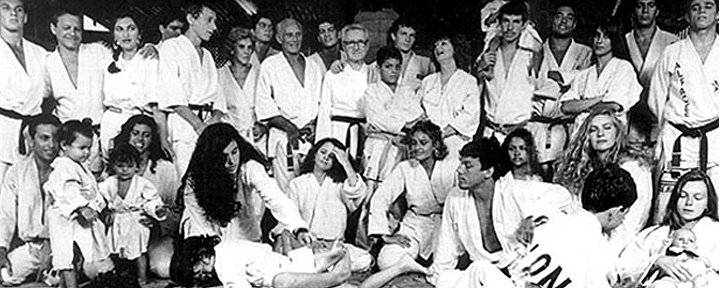


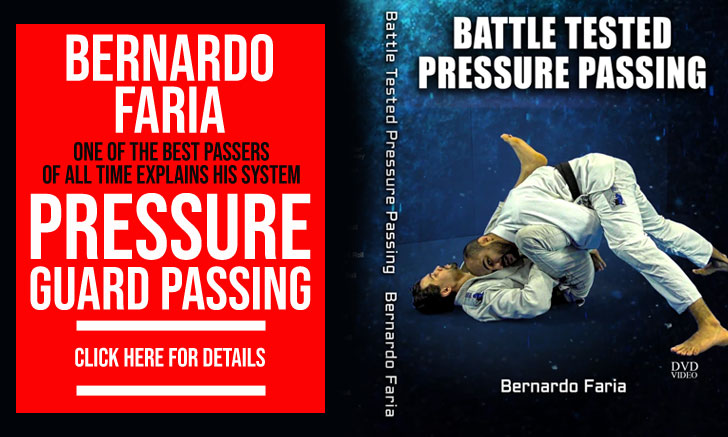
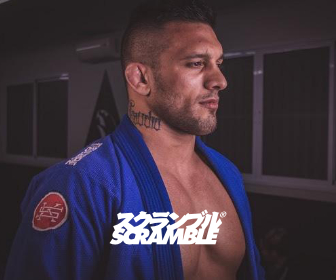
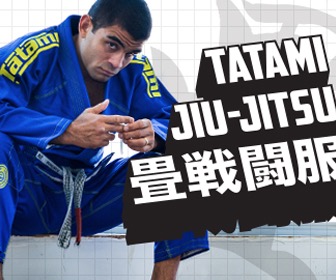






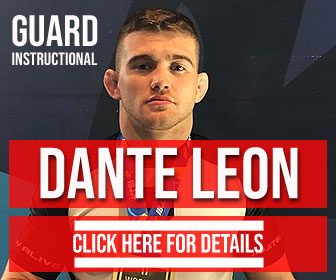
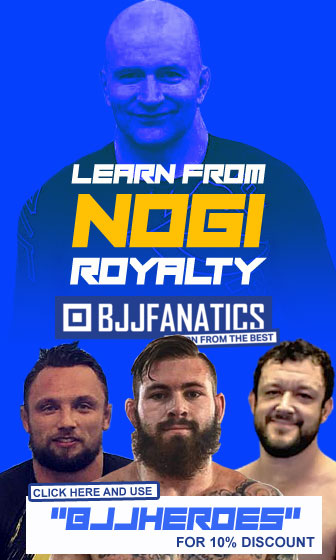
what about flavio behring !!!
Impossível não aparecer o GM Flavio Behring!!!!! Um dos mais importantes e que até hoje anda pelo mundo divulgando o BJJ
Nice article Portuga!
Cheers Jack my boy!
Hi bjjheroes:
I’m a big fan of your website and a Jiu-Jitsu trainer,since I cant find your email address,so I leave a message here:
For some reason ,its not easy to browse your website in China and there are some people who cant read English very well,so I would like to translate some of your articles in Chinese and repost to a Chinese website such as Wechat.
So I’m here to ask for your permission.
Thanks
Sincere Regards,
I think Chuck Norris is a Carlos Machado student
Really great article
Gonzalo (from spain)
please delete Spenser Pratt! He is a disgrace to BJJ and everyone who cares about BJJ..Going on national television getting in fights acting like a bully and claimind to be a Rickson Gracie blackbelt when he is a blue belt (maybe) He does not represent the positive values and aspects of BJJ andshuld be banned from anything regarding BJJ. Even non BJJ people hate him. Trust me cut the link with Spencer Pratt!!
please delete Spencer Pratt you are ruining your site by haveinghis name on here.
just sayin…
Wow, you really care about this Spencer Pratt person. I will be honest, I don't know who the guy is. His name showed up on my research, he has trained BJJ and he is a celebrity as far as my research shows. Thus, he is on the list… I hope that name is not the only thing you got from a 5000 word article
I just wanted to say I do love you site alot..my disdain for spencer is not about your site at all. I apologize again for what I wrote about you ruining your site. You are not, i just wish he would go away and not tarnish our beloved and sacred art.
thank you for giving back to BJJ by doing this web-site.
thanks Matt. And no problem, if I knew who he was I would probably hate him as well hahaha!
Romero Jacare Cavalcante should be listed just after Rolls Gracie as he is the head of Alliance and Fabio Gurgel is the General. Additionally the impact that Lloyd Irvin has made on building Jiu jitsu in America is worthy of note. Great job!! Oouss!
great job buddy..keep it
-bleuribbit from the Jungle of Indonesia-
wow,didn't know that Taker had a black belt! Awesome!
like him or not, you are missing Rorion Gracie
I believe you are missing some info and names, could you please call me ASAP
Grand Master Mansur
1 631 331 0100
cel 1 631 210 4100
Thanks
Hey Buddy! I Will write a research paper about Jiu Jitsu and I'm going to use this article in my bibliography. Can you say your first and last name please?
Thank you
How superbly written, thanks a lot great lessson.
China is the birth nation of martial arts, not Japan. Kempo is Japan's first martial art which it developed from the Shao Lin style known as Luohan Shi Ba Shou.
How come this website has no profiles or stories on Darcio Lira, he is a genuine BJJ master from the Takeo Iano Lineage..
This really needs to be brought to light, the facts are Jiu Jitsu was not just a privilege of the Gracies, Helio acknowledged this himself when defeated in a club challenge by Fadda BJJ, there are many non-gracie and even non Maeda Jiu Jitsu lineages alive and well in Brazil. Look at adding profiles on Darcio Lira, Jose Gomes (Ivan Gomes Brother) and there are many more in the north of Brazil.. Please add profiles of Takeo Yano and Darcio Lira..
Thanks
Hi, My name is Daniel Pinheiro and im from Brasil-Manaus and i would like to know how can i add my name in your Black Belts list? I have ben training for 27 years, i have miltiple championships national e international, please let me know how we can do that, thank you guys and feel free to ask me any questions you guys have in order to reenforce my adition in your list.
Once again thanks guys.
Thanks for sharing history about Brazilian Jiu-Jitsu. This information is very helpful for Jiu-Jitsu learners.
I have heard that BJJ was actually started with a different name in japan and then later modifications were made in it and then it was named Brazilian Jiu Jitsu and thanks for sharing the history. Reading history is sooo much FUN!
Hi! Thank you for a resourceful article. I’m writing a thesis connected to a BJJ and would like to cite this article in one of the parts. Would you be kind enough to let me know of author’s name?
Thank you in advance!
Hello Pia, the name is Andre Borges. Thank you.
Training at Gracie Academy Fresno, California combatives beginning white belt. Just given gi and looking forward to BJJ. Obrigado. Christopher.